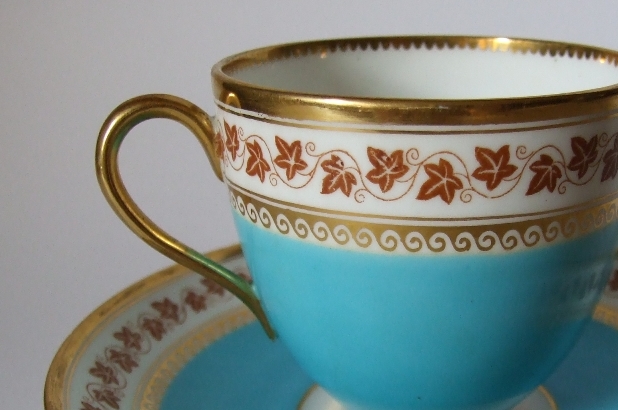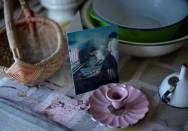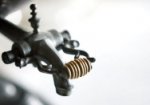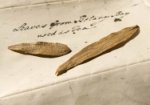A few weeks ago I was interviewed on coffee in the early colony for Channel Ten’s Lets do coffee program. We talked about how much was drunk, where it was produced, and just what was a proper coffee cup.
We are of accord with many authors that coffee promotes digestion and exhilarates the spirits; that, drank in moderation, especially if combined with sugar and milk, it is one of the most wholesome beverages known.” [Edward Abbott, The English and Australian Cookery Book, 1864.
Coffee was available as in import in the colony from its earliest days. An advertisement in 1804 for the merchant E. Wills “near the Hospital Wharf” lists prices (admittedly without mentioning quality): “Sugar 8d. per lb. by the Bag or 10d. in small quantities / Good Green Tea 6s. and Souchong 4s. per lb. / Coffee 2s. per ditto” [The Sydney Gazette, 17 June 1804]. At first glance these prices same very disproportionate, however when you compare the dry bulk of each, tea actually becomes rather expensive. As an experiment, just compare 100 grams of sugar to the same of tea, and compare the volume. Coffee was sold roasted and ground, or for larger houses buying larger quantities the beans could be bought and ground before use. There were also determined attempts to grow it locally and reduce the reliance on imports; by 1803 it was being grown at Castle Hill, and Arabica coffee plants were available commercially by the 1850s.

Coffee grinder, Vaucluse House collection. Sydney Living Museums. Photo Scott Hill © Sydney Living Museums
Maria Rundell (A New System of Cookery, John Murray, London, 18o6) describes a method of making coffee as might have been used at Elizabeth Farm:
To make coffee: Put 2 ounces of fresh ground coffee, of the best quality, into the coffee pot, and poor eight coffee cups of boiling water on it; let boil six minutes, pour out a cupful two or three times [to agitate it], and return it again; then put two or three isinglass chips into it, and pour one large spoonful of boiling water on it; boil it five minutes more, and set the pot by the fire to keep it hot for 10 minutes, and you will have a copy of a beautiful cleanness. Fine cream should always be served with coffee, and either pounded sugar candy, or fine Lisbon sugar.
Milk coffee: Boil a desert spoonful of coffee, in nearly a pint of milk, a quarter of an hour; then put into it a shaving or two of isinglass, and clear it; let it boil a few minutes, and set it on the side of the fire to grow fine [clarify].
Isinglass – initially made from the dried swim bladder of a sturgeon but by the 1810s more likely of a cod – was used as a clarifying agent, like egg to clarify wines. Likely most cooks just ran the mix through a clean piece of muslin – anyone who has broken their coffee plunger (or ‘French press’) and resorted to using a clean tea towel as a filter in a colander for a dinner party will know the method. Eliza Acton mentions a ‘barbarous custom’ of using mustard (!!!) to clarify the coffee, “of which we have heard foreigners who have been in England vehemently complain.” Edward Abbott (The English and Australian Cookery Book, London, Sampson Low, 1864, p182-4) added 1 part of chicory to 12 coffee, but this was far from a universal method.
In 1865 ‘Mrs Beeton’ describes a purpose-made muslin bag-filter (very much the ‘sock’ method for making coffee in South East Asia):
COFFEE, Simple Method of Making.
Ingredients.—Allow 1/2 oz., or 1 tablespoonful, of coffee to each person; to every oz. allow 1/2 pint of water. Mode. —Have a small iron ring made to fit the top of the coffee-pot inside, and to this ring sew a small muslin bag (the muslin for the purpose must not be too thin). Fit the bag into the pot, warm the pot with some boiling water; throw this away, and put the ground coffee into the bag; pour over as much boiling water as is required, close the lid, and, when all the water has filtered through, remove the bag, and send the coffee to table. Making it in this manner prevents the necessity of pouring the coffee from one vessel to another, which cools and spoils it. The water should be poured on the coffee gradually, so that the infusion may be stronger; and the bag must be well made, that none of the grounds may escape through the seams, and so make the coffee thick and muddy. Sufficient. —Allow 1 tablespoonful, or h oz., to each person.
Beeton’s Dictionary of Cookery (the same method was published in the variosu ‘Beeton’ publications), London, S.O.Beeton, 1865; p83
Coffee making was clearly a rapidly evolving art; in that edition she also decries boiling, the earlier technique used by Rundell – “To make coffee good it should never be boiled, but the boiling water merely poured on it.” Both she and Acton also describe percolators, which were becoming available.
So how much coffee were they drinking at Elizabeth Farm? Coffee purchases appear in the house’s daybooks, and also purchases of cups. Contemporary servant’s guides indicate that when serving tea and coffee you should allow 2 cups of tea to each of coffee, so a ratio of 2:1. In 1811 Elizabeth Macarthur purchased 2 dozen teacups, along with 1 dozen coffee, so that ratio is born out. Tea’s iconic status took a long time to be challenged – looking at my own ratio over the past week I drink 3 or 4 coffee to 1 tea.
A proper coffee cup
When tea first appeared in Europe teacups were handle-less, a variant on Chinese teabowls. As the taste for black tea grew, and the temperature at which it was drunk rose, handles were added. Tea and coffee cups are easily distinguished; teacups are broader and larger, coffee cups tend to be smaller and narrower. The coffee ‘can’ is the definitive cup, with its straight sides and cylindrical form. These cups are from the collection at Vaucluse House. My favorites are the Spode cups decorated in a Japanese ‘Imari’ inspired pattern. The exquisite butterfly painted cups, and the delicate turquoise set are provenanced to the Wentworth family.

Tea cup and coffee can, Spode ‘Japan’ pattern, c 1840, Vaucluse House collection. Sydney Living Museums V88/116-1:33. Photo Scott Hill © Sydney Living Museums
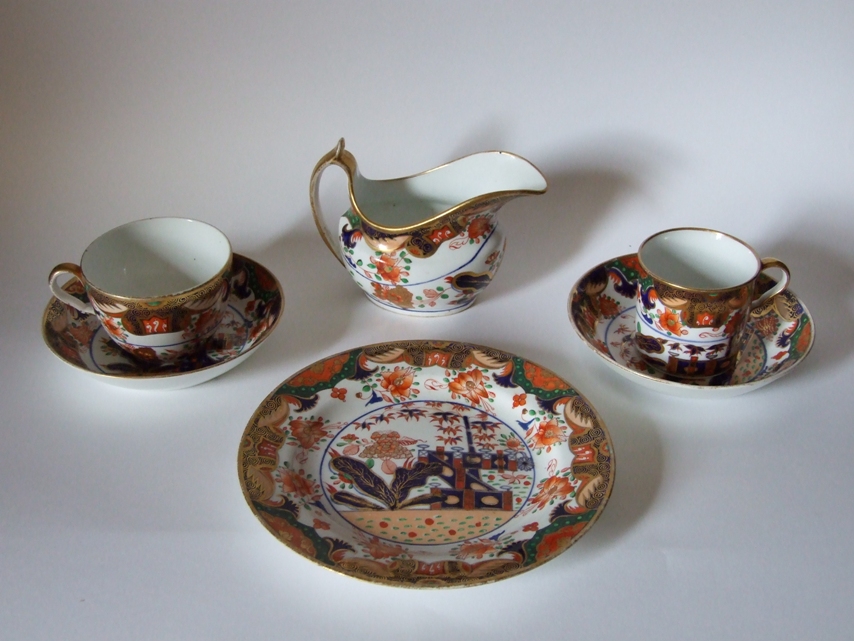
Tea and coffee set with serving plate and creamer, Spode ‘Japan’ pattern, c 1840, Vaucluse House collection. Sydney Living Museums V88/116-1:33. Photo Scott Hill © Sydney Living Museums

Coffee cups decorated with butterflies and grasses, Worcester, 1877, Vaucluse House collection. Sydney Living Museums V87/74-1:2, V87/75-1:2. Photo Scott Hill © Sydney Living Museums

Coffee cup, Hilditch and Hopwood, c1865, Vaucluse House collection. Sydney Living Museums V88/115-1:22. Photo Scott Hill © Sydney Living Museums
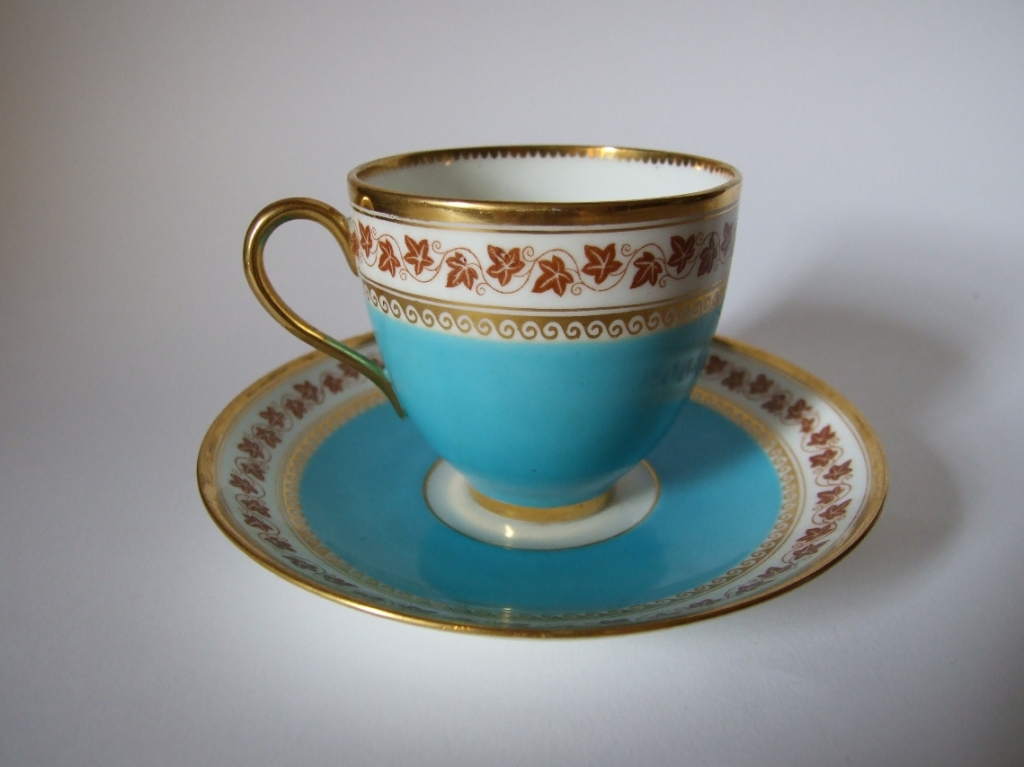
Coffee cup, Minton, c 1855, Vaucluse House collection. Sydney Living Museum V96/11-1:30. Photo Scott Hill © Sydney Living Museums
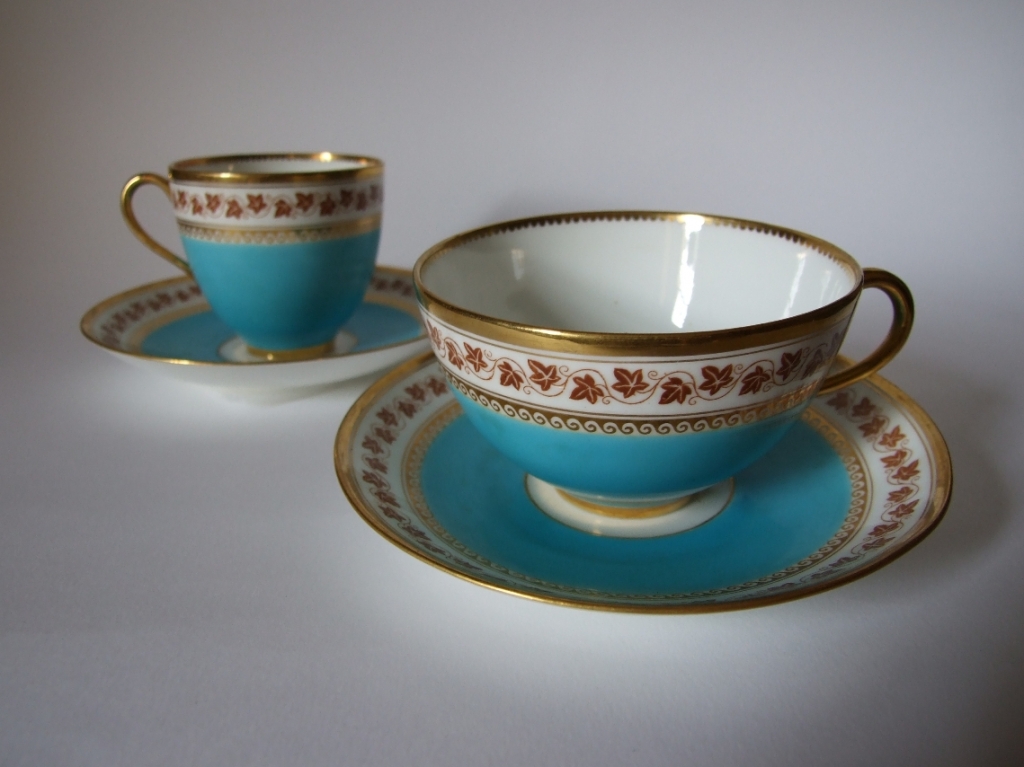
Tea and coffee cups, Minton, ca1855, Vaucluse House collection. Sydney Living Museums V96/11-1:30. Photo Scott Hill © Sydney Living Museums
A second cup
We’ve discussed tea and coffee before. Have a look at More Twanky Vicar? to discover what teas were being drunk at Elizabeth Farm and of course for a cup close to my own lips, the moustache cup at Flavour Savers.
